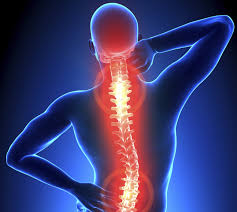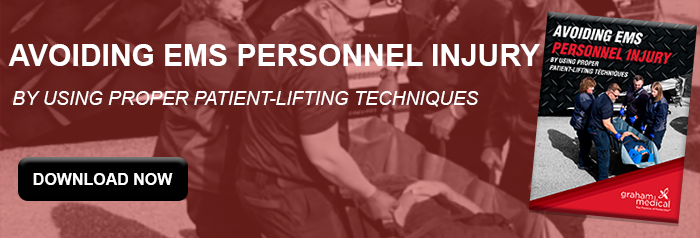 The first step in preventing EMT back injuries is understanding what causes them, specifically regarding patient care and transport.
The first step in preventing EMT back injuries is understanding what causes them, specifically regarding patient care and transport.
How do back injuries occur?
Back injuries are often the result of cumulative wear and tear due to repetitive excessive actions. While major back injuries may occur from a fall or accident, the more common back injuries usually involve lifting and twisting when moving an object of excessive weight. Back injuries may include damage to the vertebra, discs, or the muscles and ligaments in the spine.
What is the prevalence of back injuries within EMS?
EMS workers, like nurses and other healthcare workers, are subject to back injuries at a frequency much higher than the general public. In fact, this set of recommendations by the American Council on Exercise (ACE) reports that EMS providers are seven times more likely than the average worker to miss work as a result of an injury.
In addition, the report indicates that each year, half of all EMS workers suffer back pain. A common cause of these injuries can be attributed to patient transport. While assisting a patient EMS personnel may slip or trip on environmental debris, have difficulty maneuvering equipment that places excess strain on their backs, or attempt to lift a patient that is too heavy without proper assistance.
These ACE recommendations produced for National Association of Emergency Medical Technicians (NAEMT) goes on to note that these injuries can quickly become serious, stating:
- One in four EMS practitioners will suffer a career-ending injury within the first four years of service.
- Back injuries are the most frequently cited reason for leaving EMS, beating stress and fatigue.
How can EMS prevent back injuries?
Fortunately, there are ways to minimize the occurrence of back injuries and improve EMS personnel health and safety. Here are a few tips your EMTs should employ.
- Always lift with a partner or a team of responders (While lifting solo may seem heroic, it can jeopardize the health of the EMT and the well-being of the patient)
- Always use proper lifting techniques
- Be sensitive to the 35-pound maximum weight limit for lifting
- Use assistive devices (like the MegaMover®) whenever possible
- Drag or carry the victim a few inches above the ground if possible
- Lift vertically as little as possible and lean away from the load
- When transferring a patient to a gurney go lengthwise (head to foot) rather than side to side
For more information regarding EMS health and safety, click on this link to download the free eBook, "Avoiding EMS Personnel Injury By Using Proper Patient-Lifting Techniques".
When it comes to preventing EMS personnel back injuries, an essential tool is the MegaMover® Transport Unit by Graham Medical. This lightweight and flexible patient transport unit adapts to multiple environments and is equipped with multiple handles for team transport. To learn more or request a free sample, click here or call us at (800) 558-6765.

